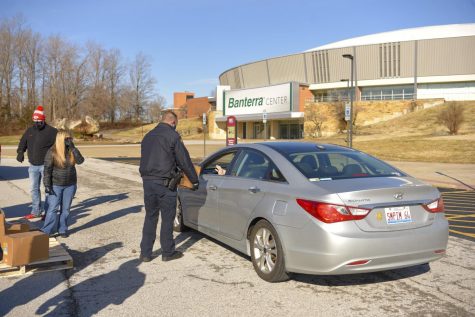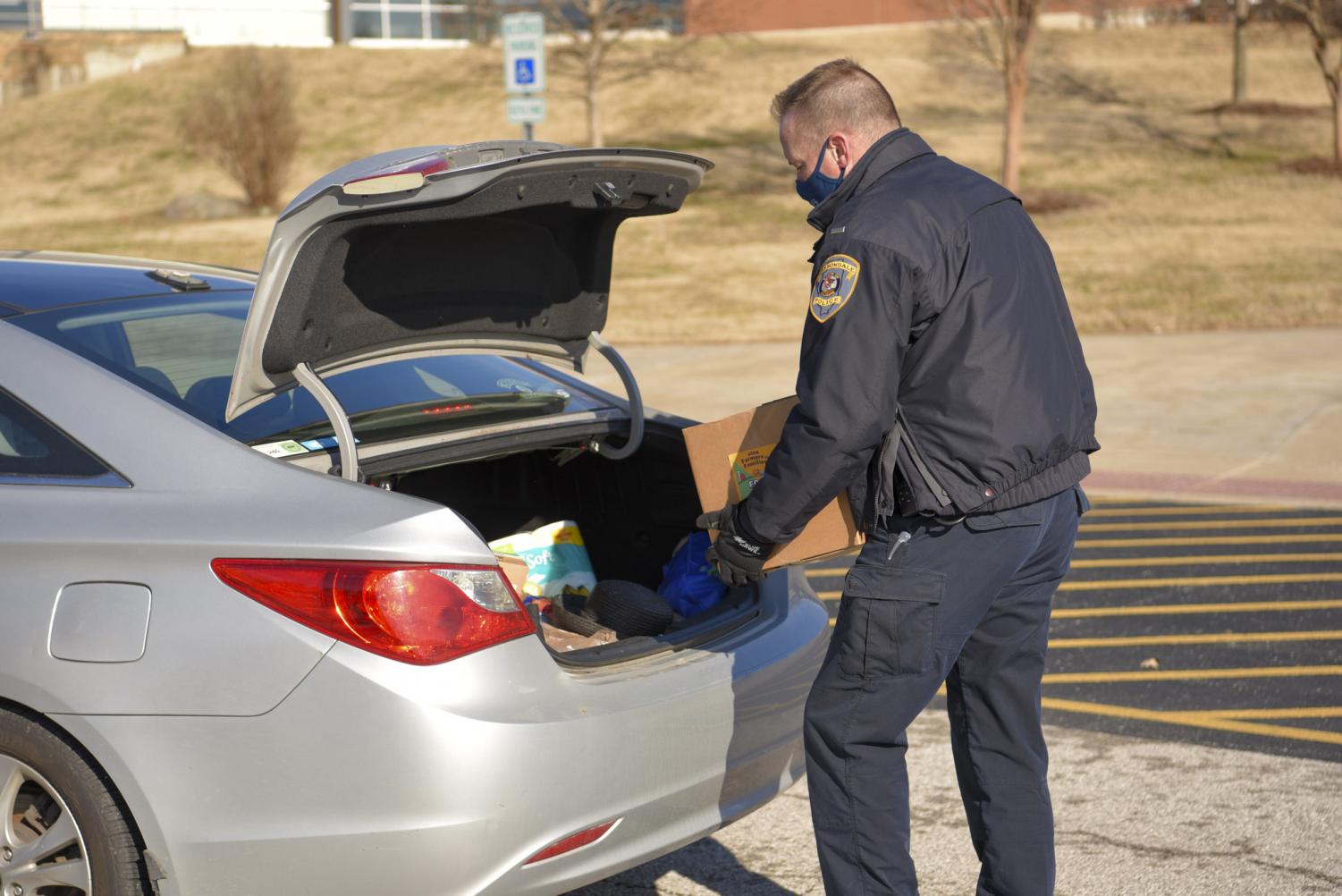Farmers to Families “shotgun approach” successful despite patchwork infrastructure
February 21, 2021
The beginning of the COVID-19 pandemic was a nearly a nightmare scenario for the food system in the United States.
Like many areas around the country, southern Illinois experienced acute shortages that left locals scrambling to find food access.

“We actually had individuals calling our office and warehouse saying they couldn’t buy food at the grocery stores,” said Lance Cusumano, co-owner of Mt. Vernon, Ill. food distribution company Cusumano & Sons. “That’s usually something in our line as a wholesaler that sells to other wholesalers, grocery stores and restaurants that you don’t hear.”
Advertisement
At the same time, stories piled up about bottlenecks in the supply chain that led to producers pulping their agricultural products or euthanizing farm animals that wouldn’t make it to a market.
The combination of increased demand on the consumer side, and supply issues on the other, meant distributors from whom food banks would traditionally buy surplus food to distribute to pantries, had nothing left over.
“You went to the grocery store, people were hoarding food, and we were losing product from our retail recovery program,” said Teresa Schryver, advocacy manager for the St. Louis Area Food Bank.
The situation was especially dire for people who are seniors, have compromised immune systems, have disabilities and have little money, all of whom couldn’t go to the store either for fear of catching the virus or inability to make the trip.
“Early on during COVID when we were partnering with the fire department, we really saw it because people were just so scared to leave their homes, and especially senior adults who, a lot of them have complicating medical conditions,” said Kendra Mitchell, serve director at Little Chapel Church in Harrisburg, Ill. “Really scary situations where I think if they hadn’t received food when they did, they literally would have starved to death, just because they were so scared to get out of their homes.”
Seeing an urgent need, organizations like the Little Chapel Church, Cusumano and Sons, Heaven’s Kitchen and many other groups attempted to step in to fill the gaps.
Cusumano began selling reduced-cost produce boxes directly to customers. Little Chapel partnered with the fire department for a canned food drive. Heaven’s Kitchen, though temporarily closed to implement safety measures, served to-go meals from the curb.
Advertisement*
It wasn’t until April 17 that the USDA announced they’d be implementing the Coronavirus Food Assistance Program, or CFAP, which included the Farmers to Families Food Box program, to purchase tens of millions of tons of food from farms that would be packed and distributed to families across the country.
Because Cusumano & Sons had already been distributing produce boxes they co-organized a bid, along with Vermillion Valley Produce based in Danville, Ill, to distribute to central and southern Illinois.
“We started going to food pantries around and [talking] about this government program, and how all they have to do is tell us how many boxes [they need] and we get boxes of fresh food for them to distribute and help them,” Cusumano said. “They didn’t believe it.”
Cusumano said he wasn’t surprised, given the situation, because organizations were stretched thin, and caught up with reacting to each new problem. It almost seemed too good to be true that anyone would show up offering thousands of boxes of free produce.
Natalie Wellan, the executive director of the United Way of South Central Illinois, helped Cusumano reach out to a series of churches, nonprofits and social service groups that could help get the food boxes to community members around the region, and Local Laborers 773 stepped up to help with distribution.
“Between those two groups it just created a buzz,” Cusumano said. “We just as fast as we could, started getting the food out there, buddy.”
The Farmers to Families program has gone through four rounds of renewed funding and started a fifth since its official start in mid-May. So far, over 132 million boxes of food have been distributed nationwide.
“Almost every phase has had a slightly different experience, and that’s mostly just from the fact that it was put together really quickly in order to just respond timely to what was going on,” Schryver said.
Distributors, food banks, pantries and the ad hoc network of volunteers and nonprofit workers had to work out systems for moving the massive amount of food both around the country and into the hands of people on the fly.
“It’s a little shotgun approach,” said Andy Sisulak, a board member at the Fowler-Bonan Foundation which operates Heaven’s Kitchen.
The program cast was effective at getting food to the public quickly, but also resulted in misunderstandings and miscommunications around the capacities of different parts of the distribution network.
“I can recall, when I was still at Northern Illinois Food Bank, there were instances where we would have someone come to drop off at a parking lot, and they didn’t have a lift gate. They didn’t have a forklift. So they literally couldn’t get the product off of the truck,” Schryver said.
Many of the issues were problems of facility where schools, nonprofits, social service groups and pantries didn’t have dry, cold, or frozen storage that would allow them to accept a variety of foods.
These places didn’t have a way to transport large quantities of food from one place to another and didn’t have the tools to accept the massive food loads at their facility.
“We are seeing where some of the inefficiencies, breakdowns or limitations of the current kind of distribution avenues are,” Sisulak said. “Whether it’s federal government or specifically the food banks to the food pantries, there are some glaring issues.”
Other difficulties arose from losing volunteers, generally seniors or retirees who could no longer offer their extra time for fear of contracting the virus.
Megan Austin, the director of the Murphysboro Food Pantry, said there used to be 40 to 45 volunteers that would assist with operations, but with the pandemic the numbers shrank to 6 or 7 regulars picking up multiple additional shifts to maintain operations.
When one senior volunteer in Heron died, the distribution of 150 food boxes a week they managed had to be passed off out of the county when there was nobody else available to take over the responsibility Sisulak said.
Those problems were compounded by the rural geography of the region, and the already existing poverty that plagued the southern Illinois region, which had eight of the ten most food insecure counties in the state even before the pandemic, Sisulak said.
(See More: Feeding America Interactive Map)
The southern Illinois region, which Sisulak and others generally define as the area south of Interstate 70, has 28 counties that combined had an estimated 108,480 food insecure individuals and a budget shortfall of $50.6 million according to Feeding America’s 2018 Map the Meal Gap annual study.
“In Cairo, you know, they’ve got two Dollar General stores. They don’t even have a gas station anymore,” Sisulak said. “That geography, I think, is somewhat unique.”
Feeding America also estimated the national food insecure population increased by 50.2 million people, or 13.4%, in 2020 as a result of the pandemic.
There aren’t yet figures that show a full picture of how southern Illinois was impacted in 2020, but from March 16, 2020 to January 31, 2021 the St. Louis area food bank distributed 13.4 million more meals than they did during the same period in 2019, a 39% increase.
Sisulak also works in the office of state senator Dale Fowler, a co-founder of the Fowler-Bonan foundation, and has been working to help address food issues in the region as they arise.
“Be mindful that all the groups involved with Farmer to Family Program are really focusing efforts to get it to the people that need it, whether it’s shut-ins or seniors, or people that don’t have the capacity to go to a location to pick up a box of food,” Sisulak said. “Everybody, from top to bottom, is really working hard to make sure that some of those gaps are filled.”
Schryver said despite the challenges, the program has been largely successful.
“We’ve just sort of been reacting the best way we can to that to make this work,” Schryver said. “Everyone’s been in emergency mode for almost a year now, and it’s just kind of been a constant flux of grace and flexibility.”
The problem for the future, according to Sisulak and Schryver, will be securing and maintaining funding over a longer term to make sure the networks that have been built to address issues of hunger are maintained and expanded.
“There has been some additional funding that has been made available to the nonprofit sector to formalize some of these roles.” Schryver said. “I don’t know how long that’s going to be. In a couple of years, when everyone is vaccinated and the public health crisis is over, people might forget that [other] people are still going to be recovering.”
Some organizations have been able to expand operations despite the ongoing stress.
“At Feeding Illinois, we are actually pursuing what we’re calling the Farmers to Food banks program,” Schryver said. “We could petition essentially the Illinois government to establish a program with the Department of Agriculture to partner and fund a program that would get that [surplus food] product to the food banks.”
Individuals in Elgin were working on converting a warehouse into a meal production space according to Schryver, and spaces are being leased in Vienna and Harrisburg to address storage capacity issues according to Sisulak.
“We can solve hunger, but we have to do it together,” Schryver said. “We’ve been really innovative in the last year.”
Staff reporter Jason Flynn can be reached at jflynn@dailyegyptian.com or on Twitter at @dejasonflynn. To stay up to date with all your southern Illinois news, follow the Daily Egyptian on Facebook and Twitter.
Advertisement


